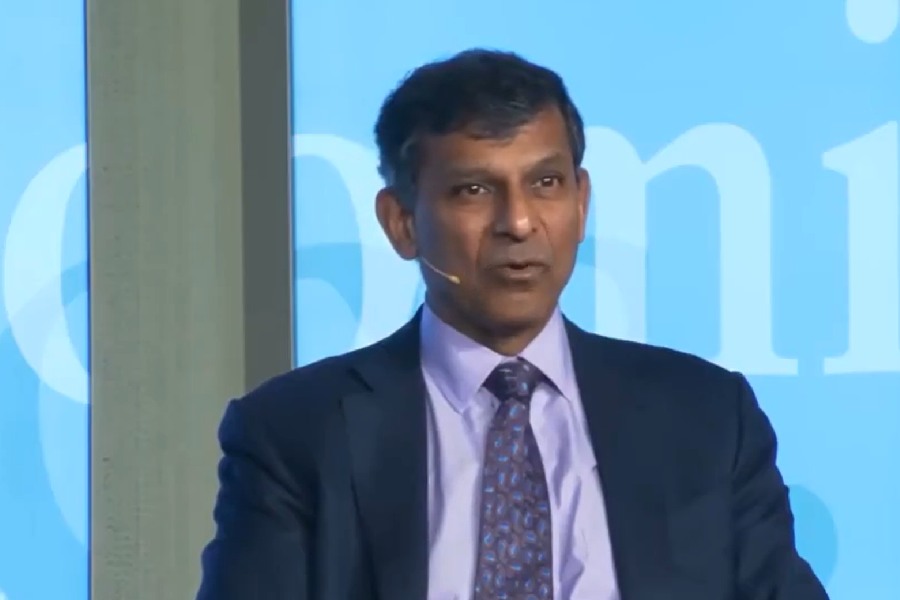What are little girls made of?
Sir ? It is sad that what started out as a refreshing story of a young girl?s quest to succeed in the cutthroat world of business, on the strength of her acumen, honesty and ambition, has turned into such a farce (?Joust begins to jazz up Jassi? March 12). The excitement surrounding Jassi?s transformation in Jassi Jaisi Koi Nahin is ludicrous. It?s evidently part of the strategy of the serial?s makers and the channel heads to boost TRPs. No matter how much the former may harp about Jassi?s ?inner? transformation, it is nothing short of a promotional campaign for the fashion entrepreneurs appearing on the show. But why, after both Armaan and Purab ? the two men in Jassi?s life ? fall in love with her in spite of her Plain Jane looks, is it necessary for her to become glamorous? What is more absurd is that such trivial business is deemed newsworthy.
Yours faithfully,
Sharmi Adhikary, Calcutta
Nightmares on celluloid
Sir ? There has been a lot of hype over Born into Brothels recently, with its maker, Zana Briski, winning an Oscar. In her interview with The Telegraph, ?I didn?t even realise I was making a film? (March 7), she has said that we did not cooperate with her over the film.
It is true that she approached us and we too asked her many times to share the film with our ethics committee, but she didn?t pay any attention. Having seen the film recently, we now realize what the problem was. The film is a one-sided portrayal of the life of sex workers in Sonagachi. It shows sex workers as unconcerned about the future of their children. This is not true. Being a sex worker and a mother, I can say that we are more protective as mothers than can be imagined. The documentary does not shed light on the valiant efforts of the sex workers to unite in order to change their own lives as well as that of their progeny. In this sense, Born into Brothels is biased.
In this age, when it is the norm to respect ethical considerations while making documentaries, the film used hidden cameras to shoot intimate moments in the lives of sex-workers and their work zones.
We fear the global recognition of such a film, giving a one-sided view of the lives of sex workers in a third world country, may do a lot of harm to the global movement of sex workers for their rights and dignity. It can even have an impact on their hard-won victories for rights, un-stigmatized healthcare and access to resources.
Yours faithfully,
Swapna Gayen, secretary, Durbar Mahila Samanwaya Committee, Calcutta
Sir ? The controversy over Born into Brothels brings to mind another film, City of Joy, which too showed Calcutta in an unflattering light. The documentary may have won the Oscar, but it has done no good to Calcutta?s image. The government should be more vigilant about such films which send out the wrong signals.
Yours faithfully,
A.S. Mehta, Calcutta
Sir ? The report, ?A slice of Calcutta in Oscar spotlight? (March 1), misses important points about the documentary on Calcutta?s red-light district which won the award.
Born Into Brothels was a project that I closely worked on and I have already sent a letter to the Academy of Motion Picture Arts and Sciences about my misgivings. Here are some of the questions I?d like to pose about the film and its makers:
(1) Did the producers get permission from the sex workers to show their lives to the world, and aren?t their identities now widely exposed because of the fame and glory and the global distribution?
(2) Why did they show only the seamy side of their lives and not the positives, especially how they?ve been raising their children and protecting them from harm?
(3) Will the filmmakers ever show the entire film to the children and their parents?
(4) Why did they completely bypass the fact that local activists have turned Sonagachi into a safe refuge for sex workers and that their efforts have brought down the AIDS rate and poverty?
(5) What is the directors? relationship with local activists like, and if it?s bad, why?
(6) Exactly how much money have the makers raised through the film and calendar (the directors claim ?hundreds of thousands of dollars?)? How much of it went to the kids and how much, if anything, to their parents?
(7) Why do the filmmakers put so much stress on taking the children out of their families and putting them in missionary boarding schools? (when there are so many good schools in Calcutta that are less expensive)?
(8) What are Zana Briski?s views about Calcutta and how much time have the makers spent in Calcutta and what is their Bengali language proficiency (which would indicate their familiarity with the place and its way of life)?
(9) Did they get permission from Satyajit Ray film authorities in the United States of America or India while lifting Ray?s/Ravi Shankar?s music from the Apu Trilogy for the film (the answer is ?no?)?
(10) How come they?ve shown all the children to be those of sex workers, when they?re actually not ? isn?t that unethical and dangerous for the children?
Yours faithfully,
Partha Banerjee, New York











